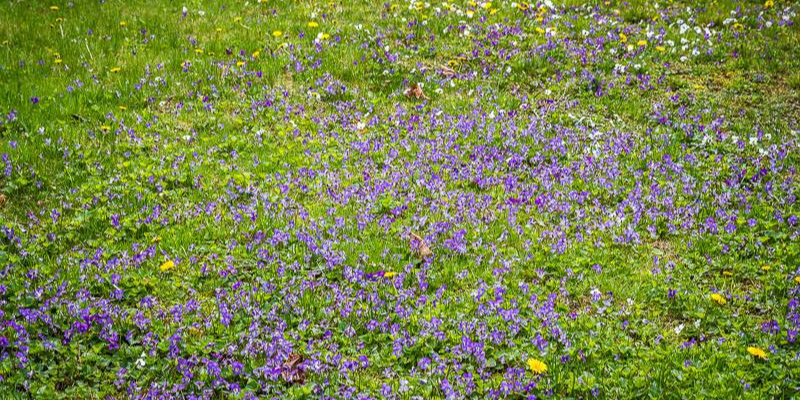
Rather than a mono-culture lawn made up only of overly thirsty blue-grass, a Greenscapes lawn works with nature and welcomes a variety of native plants to provide natural fertilization, color, texture, and food for wildlife.
Gardening is a great way to stay productive and get outside during physical distancing. Did you know that your outdoor space is also an opportunity to protect clean and plentiful water, create habitat, and improve your community? The first step is to Rethink Your Yard.
The idealized green, American, Kentucky blue-grass lawn is in reality a mono-culture, ecological deadzone made up of a non-native grass. At the recent Greenscapes 101 presentation, Greenscapes Coalition partners Margaret Duffy of Salem Sound Coastwatch and Rachel Schneider of Ipswich River Watershed Association explained why one of the focuses of the Greenscapes Coalition is encouraging residents to convert their outdoor spaces to Greenscapes.
- Greenscapes use less water, leaving more water for people and wildlife.
- Once established, Greenscapes are built to thrive will very little maintenance.
- By avoiding the use of pesticides and herbicides (which kill beneficial insects, wildlife, and plants) Greenscapes provide safe harbor for wildlife and keep water clean.
By converting your outdoor space to a Greenscape, you can increase the open space in your community, making it more vibrant and resilient. Thank you to Katie Hone, Catherine Carney-Feldman, and Gretel Clark who joined us as guest experts for the Greenscapes 101 question and answer session. We’re converting the full presentation into several videos in order to empower more people to create their own Greenscapes landscape.
The first video, Rethink Your Yard, is below. Follow our Youtube Channel for more videos.

Great stuff Rachel! You would be proud of the plant diversity that makes up my lawn, ( my neighbors may not share that pride). I haven’t added any fertilizer or pesticides for the 12 years I have owned the property. Dandelions are now coming up in full force, adding some bright color. All I do is cut it when it gets too long. It attracts quite a number of pollinators through out the spring, summer, and fall seasons! The clover attracts so many honey bees that one has to be very careful when walking in bare feet. It always seems to be changing.
Fantastic! Maybe your neighbors will see that recent Globe article and will come around to your way of thinking?